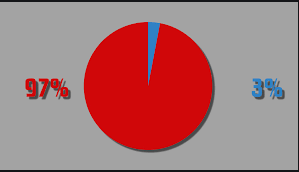Avoid the Trees—Aim for the Spaces
I know a wise skier who loves to ski down challenging slopes in deep powder at high speeds. With no path to follow, my friend manages to quickly navigate through the trees and avoid obstacles. When asked how he manages the feat, his response is,
“I look at the spaces and not the trees. When you look at the trees, your body turns in that direction, and you hit them.”
Anxiety keeps us focused on the trees. We believe the trees completely cover the path and that no spaces exit. We over think, over analyzed and exaggerated the threat.
Anxiety gives you a “sticky” brain. Events get stuck in your mind and the events replay over and over again. Too much attention is given to the small details instead of the large picture.
 When you look at the image on the left what do you see? If your first response was bats, you are focusing on the darker images. Now look at the white spaces, what do you see? If you focus on the white images in the drawing the angels should pop out at you.
When you look at the image on the left what do you see? If your first response was bats, you are focusing on the darker images. Now look at the white spaces, what do you see? If you focus on the white images in the drawing the angels should pop out at you.
This drawing illustrates there is usually more going on than first meets the eye.
Typically, with anxiety, everything seem dark or threatening because your THREAT ESTIMATOR is off. You see the negative aspects of a situation. You are hitting trees.
Noted clinical psychologist and author, Michael D. Yapko says, “ANXIETY IS A DISORDER OF PERCEPTION.”
So how do you change your perceptions?
Re-Set Your Threat Estimator: Figure the Percentages
In dealing with clients with anxiety, I asked them to use a pie chart to diagram their stressors. For example, some might be concerned about social acceptance. If a client says, “I am worried about people not liking me.” I ask the client to consider all the people in their life who they have known even briefly.
The client is instructed to draw a pie chart diagraming how often someone hasn’t liked them.
In my experience, regardless of the client or the issue, the source of their ruminating is about 3% of their actual experience. Usually the client comes up with about 3%.
I have them stand back, look at it their diagram and then I comment, “That is a very small percentage. So, 97% of all the people you have known like you and you worry about 3%?” Clients are usually rather sheepish about this realization and can adjust their previous appraisals. They re-set the threat estimator.
What If the Threat Is Real?
Problem Solve
Occasionally a worry may be about something that is a true concern. For example, if you define the problem as “I eat too much junk food” and your pie chart shows you make poor nutrition choices 90% of the time, your threat estimator may be entirely accurate.
You need to come up with an action plan to change. Some concerns are legitimate.
Next time you are worried, anxious, or depressed try this formula:
- Define the problem. Sometimes just defining something takes it away from the emotional part of our brain into logic and it feels better.
- Determine Frequency:How often does the problem occur? Draw your pie chart.
- Problem Solveor Refocus on something else if the percentage is under 40%.
- Look For the Spaces: Keep your thoughts on the times when the threat has not occurred.
Clear Path
In Great Britain, riders of their mass transit system are cautioned to “mind the gap,” meaning look out for the space between the transit car and the platform so you don’t trip as you exit and enter. Truly, you need to look down as you depart the train.
The gap can be a symbol of the things that make you anxious, you do need to “mind the gap” to keep perspective. But don’t obsess over the gap, look ahead. Keep your thoughts focused on the spaces not the trees.
CAMILLE CURTIS FOSTER LCSW
See also: https://provocounselingcenter.net/2017/06/13/the-magical-word-yet/









